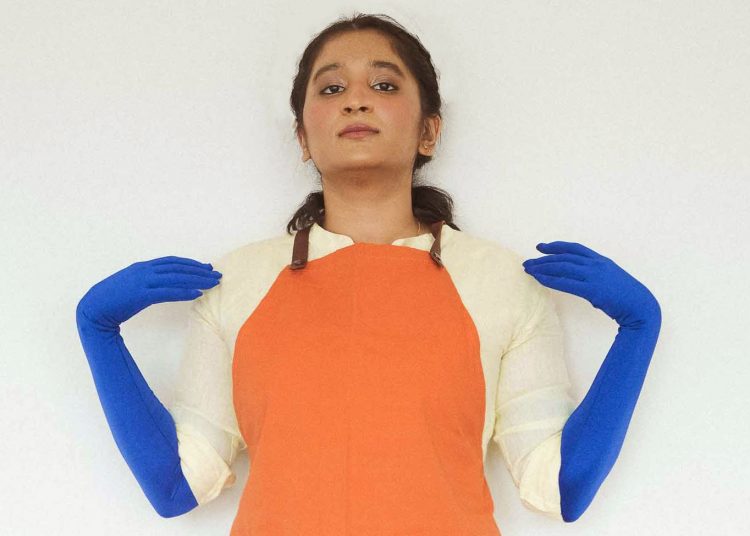Wine & Dine
Text by Shirin Mehta
“If they cannot have bread, let them eat cake!” Each time that I read this admittedly cliched misquote that the last French queen, Marie Antoinette, apparently never actually said, I think to myself, “Wouldn’t I just love to have them both?!” Greedy? Not so much! Just that there is something so life-affirming about the sight and smell of bread, that a fresh, fragrant loaf will make your spirits rise as surely as the yeast makes the dough rise to a sunny, earthy, golden hue. And as for cake…do I need to say anything more? Soft, gooey, crunchy, melty, pillowy, in all its various forms, cake, well, is just cake. Scrumptious, celebratory and guaranteed to ignite a state of happiness.
Well, the good news is that our country that has thrived on traditional sweets (always welcome) and industrial bread now has a batch of young bakers who travelled abroad or to newly popular local cooking and baking schools (our list here has one who is self-taught) so that we could have a diverse choice of Western-style breads and cakes on offer as well. (Not to say that the locally baked crusty gutli and soft paos delivered by the cycle-pedaling breadwallah, are not as delicious; but a change in palate is always welcome, no?)
These bakers, with their keen eye for design, extend their own aesthetics, so apparent in their sense of dress and style, to the care and detail of their sweet creations. Their well-fashioned pies and tarts showcase their inherent flair. And to visually “accentuate” the tools of their trade, these hands-on bakers readily exchanged oven mitts for fashion gloves that speak to their individual style. A far cry perhaps from the comfort clothing and footwear that make life easier and safer in the kitchen, but then, who’s complaining?
Right: The Good Butter’s cinnamon rolls with clean flavors of cinnamon, butter and sugar, encased in a tender dough.
Simply visit their Instagram pages to view a Willy Wonka-esque repertoire of goodies jostling each other for attention. Mallika Tandon’s rustic fig and cheese galette features “super-flaky shortcrust pastry, goat cheese mascarpone, and a drizzle of honey”. Noor Mubarak’s dark chocolate babka loaf and Homer Simpson D’oh-nuts would be hard to resist at any age. Flavia Lewis’ oranges and lemons is a “seven-layered rainbow cake of citrus sponge, sandwiched with lemon curd and whipped, white-chocolate frosting”. Zainab Motiwala’s sourdough cinnamon and organic orange buns are a “no-waste dessert that uses the whole citrus fruit; orange and lemon peels are rubbed into the sugar along with organic Ceylon cinnamon. Glazed with our signature whole orange juice marmalade”. Mitali Sahani’s experiments with sourdough, which she calls “a way of life”, have resulted in the SoDo – sourdough doughnuts – as well as sourdough focaccia. While self-taught baker Smita Sharan who is focused on “all-natural baking” offers her sourdough bread just a little bit over-browned. “We bake because we love to share our passion for baking. Fortunately or unfortunately that means we are also a little bullheaded about how we bake. Luckily, we have found folks who see that as a positive (may we keep finding such people)”, she states on Instagram.
Beignets, kouign-amann (a cross between a croissant and a palmier), cinnabombs, cronuts…. Do not call this a cultural shift, (Diwali pedas and ladus, deeply sunk into the Indian celebration psyche, will always continue to do the rounds) but rather an extension for the palate. And while Queen Marie Antoinette probably indulged in only the purest versions of delicate French confections, our bakers have tapped into the “hybrids” trend. A tasty blend for the senses, an experiment with flavours in baking. So much more than vanilla…. An inclusion of cultures, flavours and techniques that seems ever so right at this time.
They speak to Verve of their baking passion and dreams for a delicious future….
Flavia Lewis, Salt by Flavia, Mumbai
Shirt, earrings, both Flavia’s own; gloves, from The Source.
Photographed by Mallika Chandra
Did Salt by Flavia start as a passion project, or had it always been planned as a full-blown business? Do you bake at home, or do you have a separate kitchen?
I started baking in 2013 while I was still at the hobby course at IHM (Institute of Hotel Management); that turned into Flavia’s Confectionery in 2014, post pastry school, and eventually Salt this year. My journey has been a reverse one of sorts – it started as a business, as a student fresh out of college without a job and purpose. (There was so much pressure to just be something and to know what you wanted to do for the rest of your life.) Now, nearly eight years later, it’s definitely a passion project. I currently operate from the kitchen at home.
Where did you study baking? What or who inspired you to be a baker? How did this influence your baking style?
I took the three-month pastry hobby course at IHM in 2013 and studied pastry at the Culinary Arts Academy in Switzerland soon after.
I’ve always been in the kitchen. While I was growing up, my family threw many parties, and my father was very meticulous about the menu planning, shopping, cooking, serving – each one was an elaborate affair. Meals at home were also something that we were always a part of, so I took to cooking very early on.
My grandmother died when I was three, but my memory of her is centred around food – through stories and recipes. Both she and my late father have influenced my baking style in the sense that there are always boundaries to be pushed. There are new flavour combinations to be tried; things that wouldn’t work together at first glance, but they actually do. Sometimes they may not, but experimenting is key.
How would you describe your style of baking? Are there any new techniques that you learnt, or are the European classical/American baking styles still relevant today?
My baking style is comfortable: easy to work with, easy to eat, easy to enjoy. There are many new baking styles I’ve picked up in kitchens that I’ve worked in, in addition to the European techniques that I have learned. However, for India, I think it’s very important to adapt to what works for you. Some of the ways we work may be considered sacrilegious to others, but they are influenced by our environment.
How does your baking style connect with your fashion sense?
My fashion sense is also very much centred around being and feeling comfortable, with some small pieces added to accentuate or pop, like earrings or a bright lipstick. Similarly, with my pastry, you will find layers and elements that pop as you take another bite.
What are the clothes and shoes you prefer to wear when you’re baking?
Shorts! It’s almost always shorts and a T-shirt. I have a pair of glittery pink Skechers slides; they feel like I’m walking on clouds. When you’re on your feet for hours together, this is a very important quality to have in footwear.
What are some of the misconceptions people have about baking and bread making in particular? Since it’s more scientific and tedious than cooking.
Yes, pastry is an exact science and may seem more tedious than cooking, but the more you experiment with it, the easier it gets to play around with things and work by feeling. Even with bread, once you have the basics down pat, life gets much easier. Honestly, I don’t see why it is considered so difficult; but then again, some people understand accounting and finance, I understand pastry.
Do you prefer local ingredients, imported ingredients or a mix? What is the most important ingredient in your kitchen?
I try and use only fresh local ingredients. The most important ingredient in my kitchen is butter! Better butter actually makes everything better.
Birthday Cake: Cream cheese pound cake, salted potato chip praline, 54.5 per cent couverture dark chocolate frosting.
What are some of your specialties? Which has been your most popular baked item?
Years ago, I created the Frankenstein out of leftover bits-and-pieces and scraps – five years later, it is still the most popular item on my menu. The Frankenstein is a layered dessert made of a chocolate chip cookie base, baked cheesecake, caramel and sea salt, and finished with a chocolate whiskey glaze.
Have you experimented with or reinvented any Indian sweets? Do you think Western-style pastries and desserts will ever be as popular as desi mithais in India?
I haven’t experimented with Indian sweets because I think they’re great the way they are; I don’t know enough to try and make them better. I think both pastries and mithais have their own markets; they’re not the same thing.
What new pastry are you working on that you are most excited about? Is there any pastry that you loved but the customers did not appreciate?
I’m currently working on an ode to the drink Cabo Pineapple (tequila, pineapple, lime) that I’m very excited about! I did have a mango cream tart that I was thrilled about, but it didn’t taste as good in reality as it did in my head. Oops!
(Left): Scheherazade – salted butter biscuit, liquid orange cheesecake, rose and pistachio brittle.
(Right): Hazel jar – dark chocolate sponge, soft caramel sauce, roasted hazelnut honeycomb, dark chocolate mousse.
Are people looking for healthy dessert/pastry options, or do they indulge when it comes to sweet things?
Sometimes I get requests for vegan or gluten-free…






















